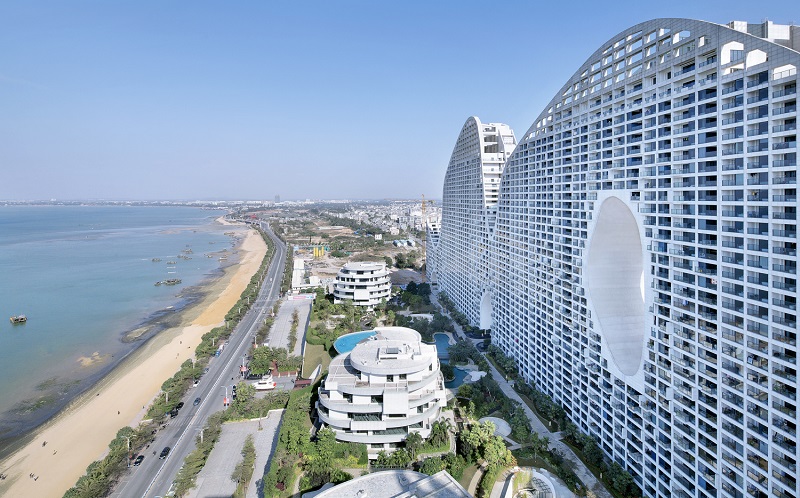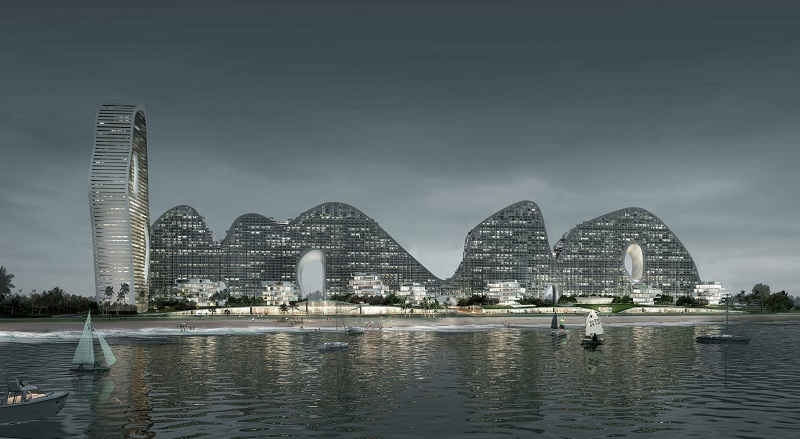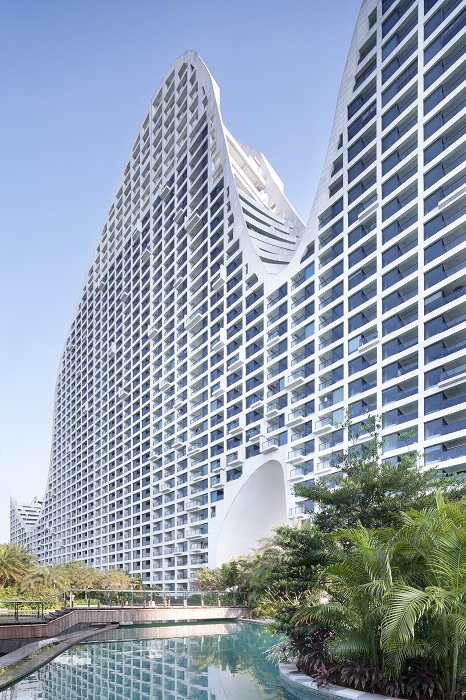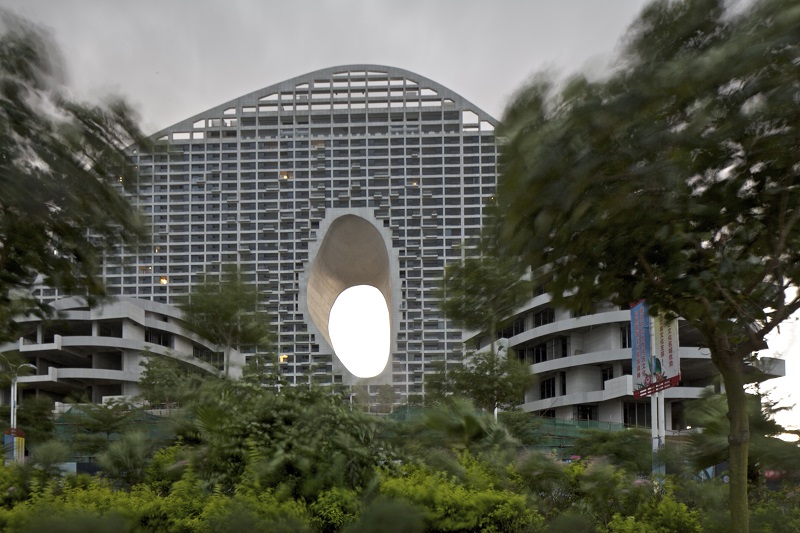Fake Hills, China
In December 2016, the Beijing-based design firm MAD completed the first phase of their latest major development. Fake Hills, located on the coastal city of Beihai, China, is a residential apartment complex with an undulating, rollercoaster-like roofline.
Inspired by rising and falling topography, the 492,000 sq. m complex stretches across an 800 m-long narrow oceanfront site. The aim was to produce a combination of two common yet opposing architectural typologies – the high rise and the groundscraper.
Their intention was to build high-density, economically-viable housing, while retaining some degree of architectural innovation; a response to the typically mundane urban tower complexes so prolific across China.
With the first phase complete, the next stage will involve a cluster of smaller blocks and a tower with 'wavy' edges.
Views are maximised for the residents as a result of the geometrical arrangement of the architecture, with public spaces, gardens, tennis courts and swimming pools provided as part of the continuous roof platform.
Individual sections of glazing cover the gridded facades of the slender block, while balconies are cantilevered out over the steeper sections of the roofline. Openings in the buildings allow sea breezes to pass through and provide rock-climbing facilities.
According to the architects:
"The [structure] is an undulating, hill-like form comprised of a single linear mass. The egalitarian principle of providing natural light, fresh air and ocean views underpins the building and together they create a new building typology and an environment that encourages a healthy lifestyle.”
Images and content courtesy of MAD Architects.
[edit] Find out more
[edit] Related articles on Designing Buildings Wiki
- Arches Boulogne, France.
- Beijing National Stadium.
- CCTV Headquarters.
- China Philharmonic Hall.
- Gaia Building, Ecuador.
- Hangzhou Gateway, China.
- HOME, Mannheim.
- Mirage - Montparnasse Tower renovation.
- Tebrau Waterfront Residences.
- UNIC, Paris.
- Unusual building design of the week.
- Xinhee Design Center.
Featured articles and news
RTPI leader to become new CIOB Chief Executive Officer
Dr Victoria Hills MRTPI, FICE to take over after Caroline Gumble’s departure.
Social and affordable housing, a long term plan for delivery
The “Delivering a Decade of Renewal for Social and Affordable Housing” strategy sets out future path.
A change to adoptive architecture
Effects of global weather warming on architectural detailing, material choice and human interaction.
The proposed publicly owned and backed subsidiary of Homes England, to facilitate new homes.
How big is the problem and what can we do to mitigate the effects?
Overheating guidance and tools for building designers
A number of cool guides to help with the heat.
The UK's Modern Industrial Strategy: A 10 year plan
Previous consultation criticism, current key elements and general support with some persisting reservations.
Building Safety Regulator reforms
New roles, new staff and a new fast track service pave the way for a single construction regulator.
Architectural Technologist CPDs and Communications
CIAT CPD… and how you can do it!
Cooling centres and cool spaces
Managing extreme heat in cities by directing the public to places for heat stress relief and water sources.
Winter gardens: A brief history and warm variations
Extending the season with glass in different forms and terms.
Restoring Great Yarmouth's Winter Gardens
Transforming one of the least sustainable constructions imaginable.
Construction Skills Mission Board launch sector drive
Newly formed government and industry collaboration set strategy for recruiting an additional 100,000 construction workers a year.
New Architects Code comes into effect in September 2025
ARB Architects Code of Conduct and Practice available with ongoing consultation regarding guidance.
Welsh Skills Body (Medr) launches ambitious plan
The new skills body brings together funding and regulation of tertiary education and research for the devolved nation.
Paul Gandy FCIOB announced as next CIOB President
Former Tilbury Douglas CEO takes helm.
UK Infrastructure: A 10 Year Strategy. In brief with reactions
With the National Infrastructure and Service Transformation Authority (NISTA).


























